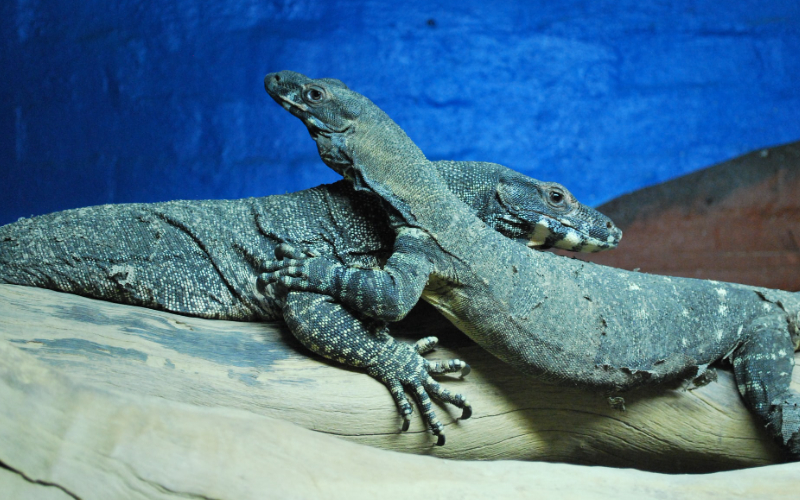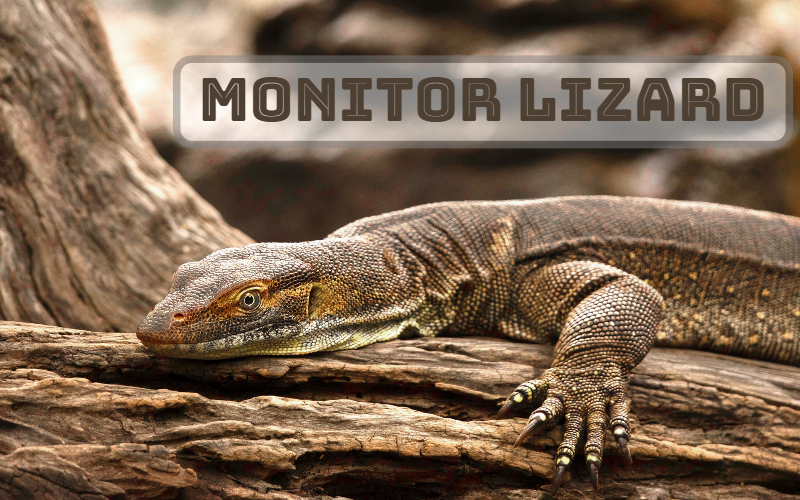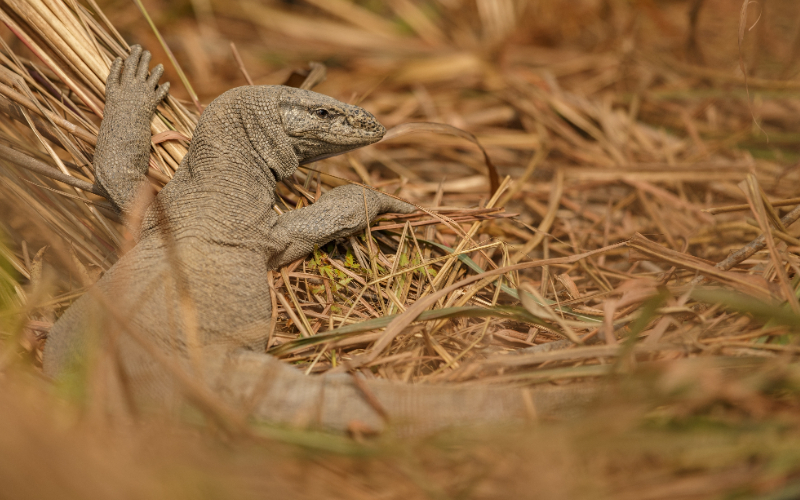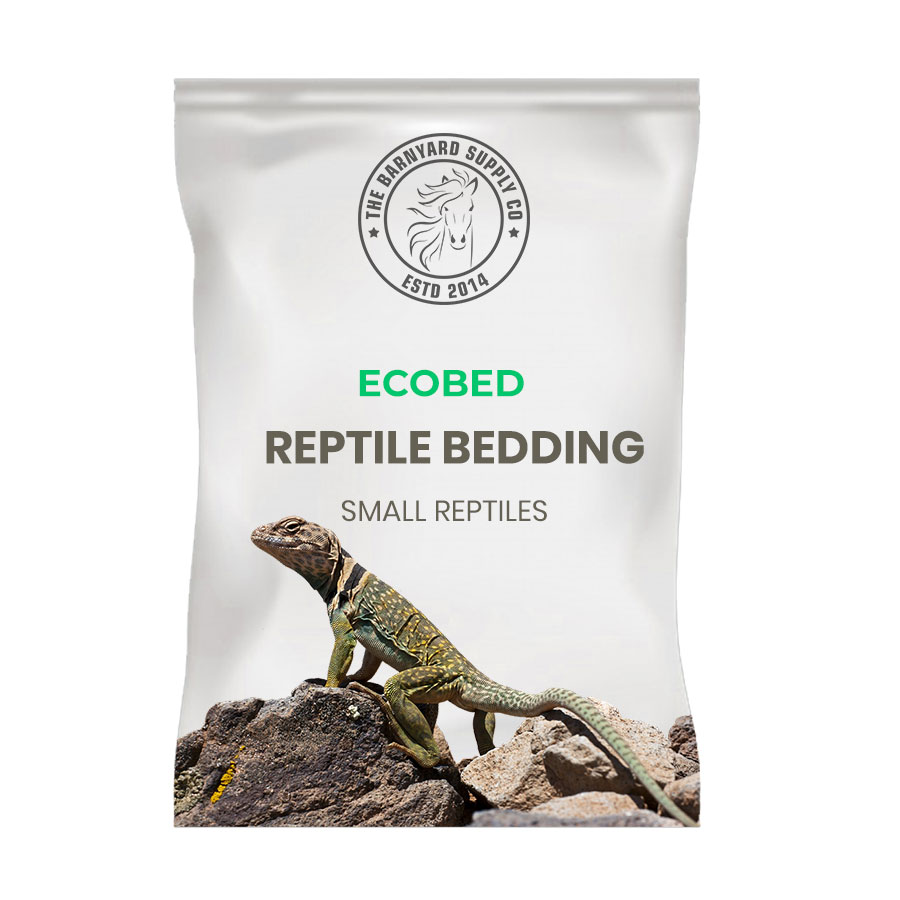Appearance and Behaviour
Monitor Lizards are long and slender ground dwellers found in Australia’s Northern and Western Territories. They are typically brown or tan in colour, with a red or yellow tinge depending on lineage. When fully developed, the tail is usually 50-60% of the body length. Neonates are approximately 10 to 12 inches long when they are born and grow swiftly. Males achieve a total length of 412 to 5 feet in adults, and females reach a total length of 412 to 5 feet. Females typically reach a maximum total length of 312 feet. In captivity, a monitor can survive for 15 to 20 years with good care.
Monitor lizards are typically found in cracks between rocks or under slabs near rocky outcroppings. As their metabolism and energy levels are lower than those of other Australian reptiles, they are frequently seen waiting for prey in trap. They wander between taller basking sites and warm shaded areas during the day, picking up whatever prey they may find along the way. Beetles, cockroaches, tiny lizards, and mammals are among the most common.
Temperature and Lighting
A monitor cage should have a temperature gradient that starts at 75 degrees Fahrenheit on the chilly end and rises to 100 degrees on the warm end. Provide a basking temperature of around 115 degrees Fahrenheit, as measured by a thermometer, directly beneath a basking light. If you’re measuring temperatures using a non-contact infrared temp gun, aim for a value of 125 to 135 degrees.
Monitors are full-time basking species by nature, thus they require a high-intensity UVB source. Provide a strong 10-12 percent UV tube that runs for at least 2/3 of the enclosure’s length. You can raise the lamp’s strength based on the enclosure’s height, but in a standard 4 x 2 x 2ft vivarium, 10-12 percent should suffice. Although the monitor is a basking species, it may choose to spend some time in a dark environment. Provide partial and full hiding locations within the enclosure to achieve this.
Humidity
The monitor can tolerate a wide range of humidity levels, but it appears that a more humid and damp atmosphere makes them happy and facilitates shedding. In the middle of the enclosure, a relative humidity of 70 to 80 percent is usually adequate. Keep the substrate damp a few inches below the surface but rather dry on the top.
Housing
Monitors are used to working in hot environments and struggle with the cold and dampness. Keep the monitor lizard in a wooden vivarium to protect it from both of these hazards. We would generally choose an enclosure that is as near as 4 x 2 x 2ft as practical, with wide vents and glass sliding front doors, due to the temperature gradient required.
All of this ventilation should prevent heat from escaping from one side of the enclosure to the other while maintaining a steady temperature in the basking region.
Habitat Maintenance
At least once a week, thoroughly clean and disinfect the habitat. Scrub the tank and furnishings with a 3 percent bleach solution. Rinse thoroughly with water to remove any signs of bleach smell. Properly dry the tank and furnishings before adding clean substrate.
Grooming & Hygiene

Lizards lose their skin on a regular basis, keeping the humidity in the environment at an acceptable level to allow for optimal shedding. Bathe the lizard in a big container large enough for it to submerge its entire body, or use a shed box, a hide box with sphagnum moss, to aid in the shedding process.
Diet
A very well Monitor Lizards diet includes gut-loaded crickets, mealworms, waxworms, roaches, and commercial monitor diets, among other insects. Monitor lizards will eat common goldfish and frozen/thawed rats. High-fat foods, such as dog and cat food, should be avoided. Rodents that have been frozen and thawed may be offered on occasion. Do not defrost frozen rats in the microwave, and do not prepare them in the same area as meals. If it’s not possible to avoid it, clean the area thoroughly.
Feeding
When feeding your monitor, keep the following in mind:
- There should always be fresh, clean, chlorine-free water accessible.
- Feed the monitors on a daily basis.
- Add a calcium supplement to your food every day, and a multivitamin supplement once or twice a week.
Common Health Issues
- Gastro-intestinal disease: Bacterial or parasite illness causes runny faeces, caked or smeared stool around the vent area, and loss of appetite. Consult your veterinarian if you see this type of problem.
- Metabolic bone/vitamin deficiency: Inability to absorb calcium due to a lack of UVB light or low calcium/vitamin D levels. If left untreated, it can lead to abnormalities and softening of the bones. Lethargy and swelling limbs. Consult your veterinarian and make sure you’re getting enough UVB light and calcium/vitamin supplements.
- Respiratory disease: Mucus in the mouth or nose, as well as laboured breathing. An environment that is overly cold or humid can cause this.
Substrate for Monitor Lizards
For Monitor Lizard the ideal substrate is cypress mulch chips, soil mixture and coconut husk/coir by-products, such as EcoBed Reptile Bedding.
Coconut Husk
One of the safest and most effective reptile bedding options is coconut husks or chips. It’s a must-have because it’s soft, comfortable, absorbent, and aerated to perfection. Its absorbency keeps odours at bay, holds moisture for longer, and maintains a suitable temperature in the room. You can use it according to your requirements. Coconut bedding is non-allergenic, biodegradable, reusable, and recyclable, as well as being easy to clean and store.
Advantages:
· Very natural look
· Self-cleaning and easy cleanup of droppings
· Affordable and good value
Disadvantages:
· May attract mites and bugs over time
Cypress Mulch
Cypress mulch is a comfortable substrate for Monitor lizards. They can dig around in the mulch and it retains humidity nicely. It’s attractive and has a pleasant but not overwhelming smell. This mulch is readily available at garden shops. You do have to remove all the mulch to thoroughly clean the cage.
Advantages:
• Retain moisture
• It doesn’t mold.
Disadvantages:
• Costly
• Mites thrive in cypress mulch
Soil mixture
Soil Mixture is a soil-like substrate manufactured from a unique combination of peat moss, soil, sand, and carbon that provides the ideal environment for live-planted realistic or bioactive tropical terrariums. It encourages natural activities like burrowing and egg-laying since it mimics the soil found in tropical reptiles’ natural habitats. It’s also possible to add more sand to make it ideal for desert setups!
Advantages:
· Create a natural look.
· Reptiles like to borrow it.
Disadvantages:
· May create skin infection.
Conclusion:
If you decide to keep a monitor lizard as a pet, make sure you have everything ready before bringing him home. Your pet requires a good house and habitat that is both safe and large enough for them. He’ll also require all of the meals that will provide him with a balanced diet.
You can have a happy reptile that can live a long and healthy life with only a little preparation. These care sheets help you to care for your loving Monitor Lizards.
Reptile petting is one such occasion habit seen in rarity, for you to raise them in full conscience need as much information as possible, read more for a complete guide on each pet to wish to raise.






